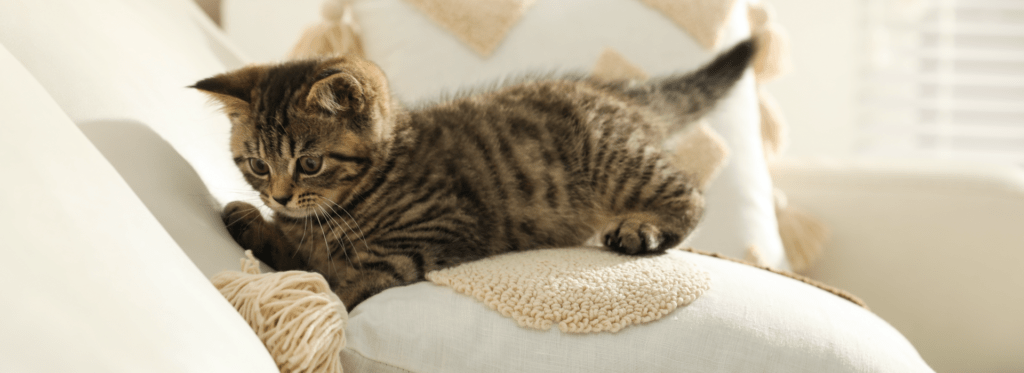What is « declawing » or onyxectomy?
Declawing is an orthopedic surgical procedure that involves the amputation of the third phalanx, a small bone located at the end of each toe of the cat. It is not enough to remove only the claws we also have to cut (with a scalpel or the laser) the ligaments, nerves and also remove the small bone where the claw is anchored.
This surgery must be performed under general anesthesia.
If the surgery is done with a scalpel, a tourniquet should be used around the leg during the amputation of the phalanges to prevent bleeding.
The cat should be receiving painkillers before, during and after the surgery. Painkillers are also required at home in order to properly control the pain associated with this procedure.
Compression bandage on the paws may be necessary to reduce postoperative bleeding.
Possible complications following this surgery?
Complications of declawing include:
Reasons not to declaw your cat…
For the pain that it leads to and the possible complications, this procedure should be reserved as a last resort. Before taking such a step one must take into consideration it’s effect on natural feline behavior.
Also note that declawing is not an alternative for aggression problems, it can even make such problems worse.
Why cats do their claws on objects?
Because scratching is an integral part of their natural behavior and instinct.
Because it allows them to exercise the muscles of their front legs,
… it is used to renew their broken claws,
… it can permit them to spread their scent (pheromones) on objects which can also improves their state of well-being,
…they can defend themselves and climb trees.
And finally, it can indicate their presence to other cats by leaving a visual trace on objects and also a scent marking via pheromones from their pads.
What are the alternatives to declawing?
Offer catnip to your cat in the area where you want him to do his nails.
Play with him with a laser, feather, or a toy where you want him to do his nails.
1.Teach him where not to scratch
Have a bottle of «SSSCATMD» (innotek.net/multivet) in strategic locations. A motion sensor first detects the presence of your pet, which is followed with a loud noise and then a jet of air which works every time he passes in front of it.
Spray your cat with a jet of water or make a loud noise when your cat does his claws in an unwanted place.
Use a non-comfortable material in the area where your cat does his claws: aluminum foil, adhesive tape double surface (www.stickypaws.com), plastic wrap, etc.)
2. Put your cat outdoors:
Cats are solitary but naturally active, curious, territorial and climbers. By allowing him to go outside, not only do you contribute to his physical well-being but also to his emotional balance. Also, a cat that goes outside will tend to his claws on external objects rather than on your new couch!
If you fear that your cat may run away, get injured or become the prey of the neighbor’s dog? Tie him with a harness and a long leash or build him an outdoor enclosure. And have your cat microchipped.
3. Cut the claws!
Trimming your cat’s claws regularly can reduce the need of your cat doing his claws on your furniture. Get your kitten used to nail trimming as early as possible.
4. Environmental enrichment inside your house.
Preventing the destruction of furniture and objects made by your cat’s claws can be done through the enrichment of their environment. Environment enrichment means to set up in your home all the tools necessary to maintain the physical and emotional health and well being of your cat. This is especially important if your cat cannot have access to the outside.
5. We can also apply Soft Paws on your cat’s claws.
These vinyl false nails are applied on each claw with a non-toxic glue to eliminate damage on your furniture while allowing your cat to follow his instincts.





